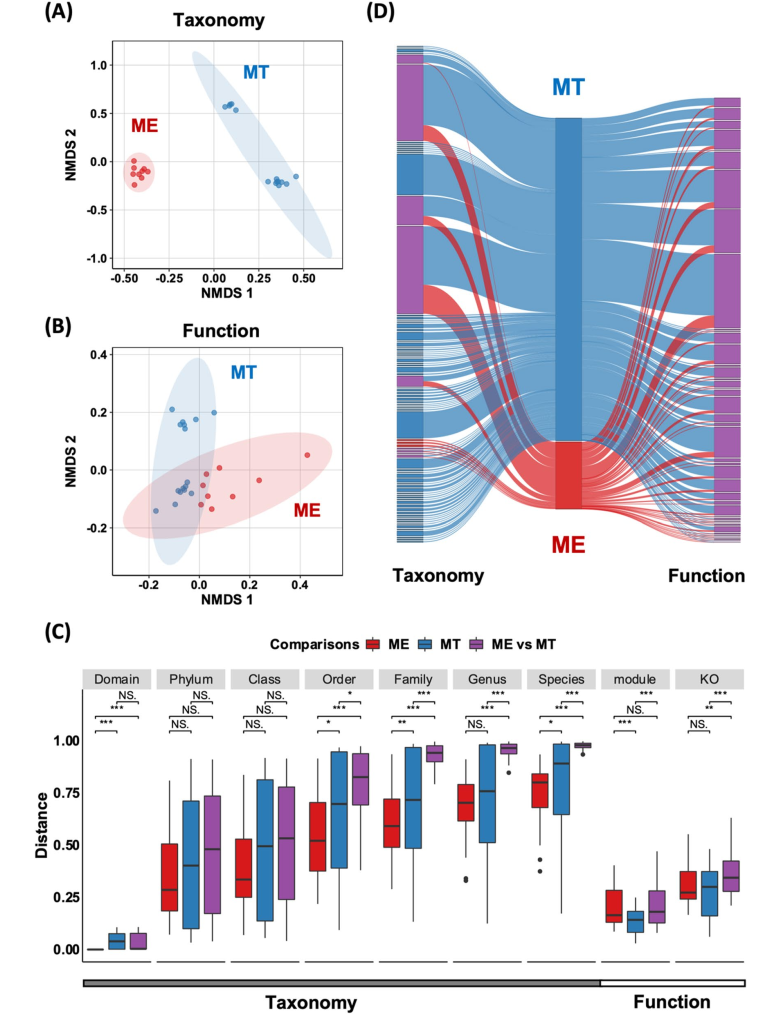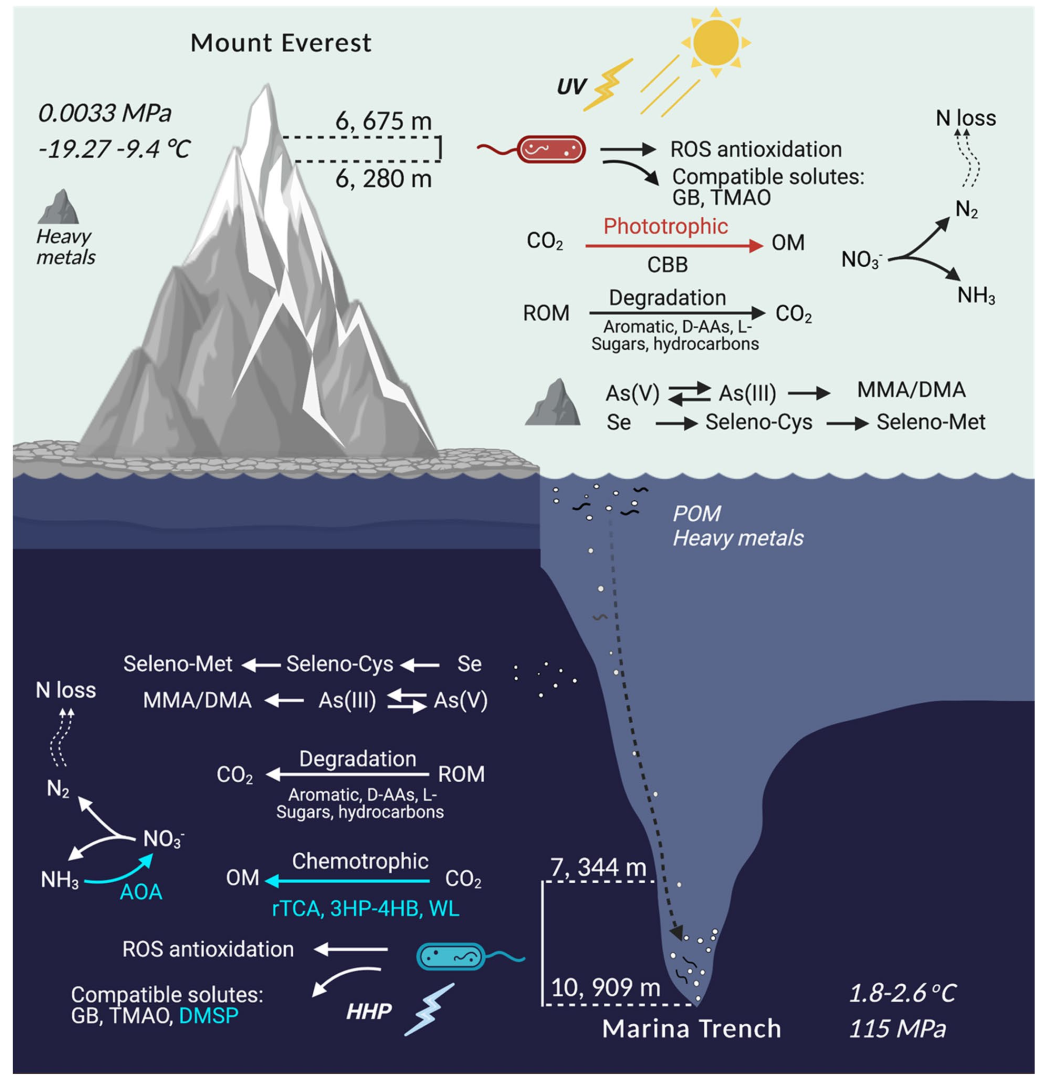Comparison of prokaryotes between Mount Everest and the Mariana Trench
Background
Mount Everest and the Mariana Trench represent the highest and deepest places on Earth, respectively. They are geographically separated, with distinct extreme environmental parameters that provide unique habitats for prokaryotes. Comparison of prokaryotes between Mount Everest and the Mariana Trench will provide a unique perspective to understanding the composition and distribution of environmental microbiomes on Earth.
Results
Here, we compared prokaryotic communities between Mount Everest and the Mariana Trench based on shotgun metagenomic analysis. Analyzing 25 metagenomes and 1176 metagenome-assembled genomes showed distinct taxonomic compositions between Mount Everest and the Mariana Trench, with little taxa overlap, and significant differences in genome size, GC content, and predicted optimal growth temperature. However, community metabolic capabilities exhibited striking commonality, with > 90% of metabolic modules overlapping among samples of Mount Everest and the Mariana Trench, with the only exception for CO2 fixations (photoautotrophy in Mount Everest but chemoautotrophy in the Mariana Trench). Most metabolic pathways were common but performed by distinct taxa in the two extreme habitats, even including some specialized metabolic pathways, such as the versatile degradation of various refractory organic matters, heavy metal metabolism (e.g., As and Se), stress resistance, and antioxidation. The metabolic commonality indicated the overall consistent roles of prokaryotes in elemental cycling and common adaptation strategies to overcome the distinct stress conditions despite the intuitively huge differences in Mount Everest and the Mariana Trench.
Conclusion
Our results, the first comparison between prokaryotes in the highest and the deepest habitats on Earth, may highlight the principles of prokaryotic diversity: although taxa are habitat-specific, primary metabolic functions could be always conserved.

Taxonomic and functional diversity of microbiome in Mount Everest (ME) and the Mariana Trench (MT). A Taxonomic composition between ME and MT. Calculation was performed on species abundancy against the clean reads of metagenome. B Functional diversity between ME and MT. Calculation was performed on KO abundancy against the clean reads of metagenome. C Comparison of dissimilarities of function and taxonomy within ME, within MT and across two habitats. The dissimilarities of functions and taxonomy were reflected by the Bray-Curtis distance. Statistic significances were calculated by Wilcox test (*p-value < 0.05; **p-value < 0.001; ***p-value < 1e−5), while no significance was represented by “NS”. D Sankey network of taxonomy and function between ME and MT. Calculation was performed on 648 representative MAGs (above middle-quality, after removing redundancy). We used class level to reflect taxonomy and KEGG metabolic modules to reflect function. ME-specific taxa and functions were represented in red, and MT-specific were represented in blue, while common taxa and functions were represented in purple.

Schematic representation of major prokaryotic biofunctions compared between the ME and MT. ME-specific pathways are in red, while MT-specific pathways are in blue. OM, organic matter. ROM, refractory organic matter
Video Abstract:
Reference:
Yongqin Liu#, Zhihao Zhang#, Mukan Ji, Aoran Hu, Jing Wang, Hongmei Jing, Keshao Liu, Xiang Xiao*, Weishu Zhao* (2022). Comparison of prokaryotes between Mount Everest and the Mariana Trench. Microbiome, 10, 215.
Link: link.springer.com/article/10.1186/s40168-022-01403-y

